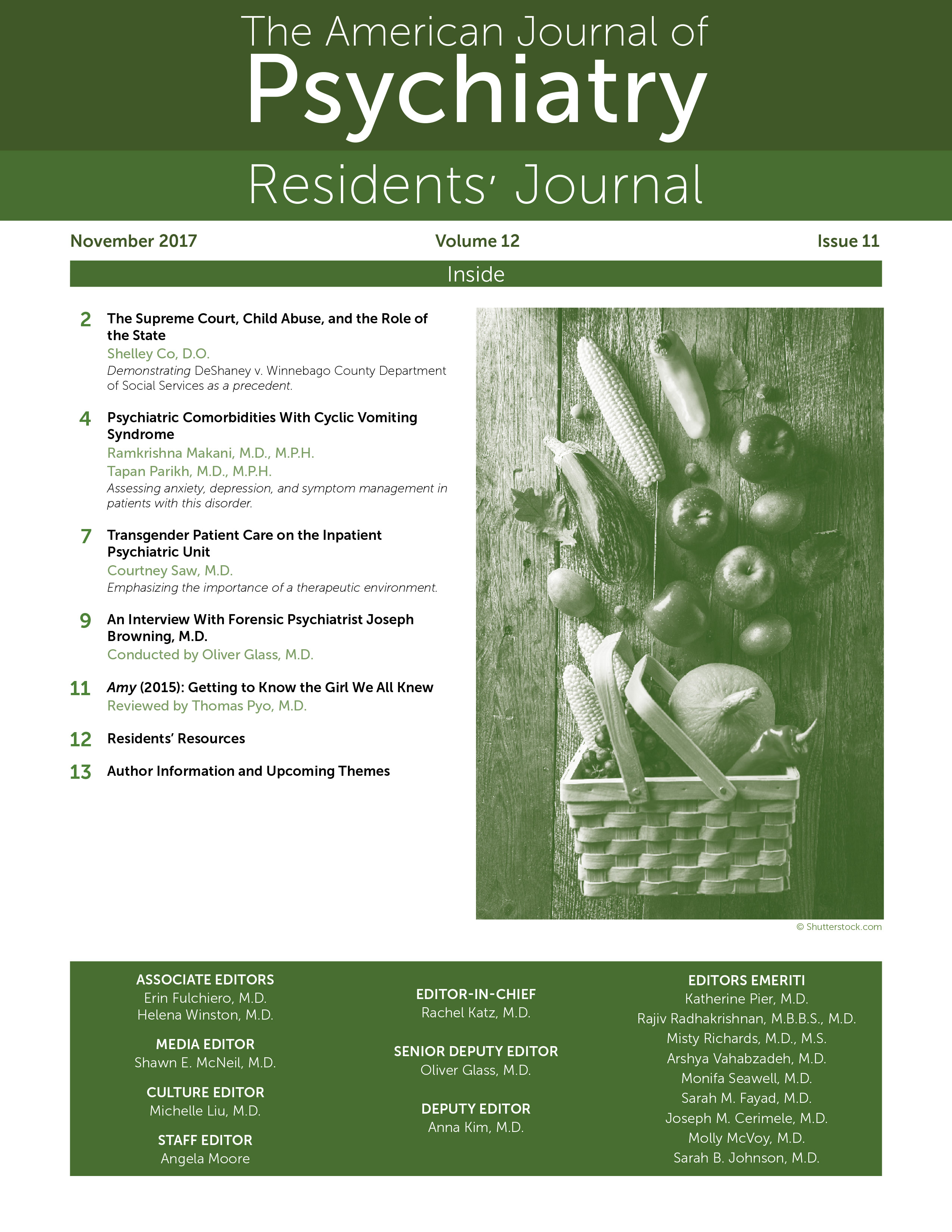Transgender Patient Care on the Inpatient Psychiatric Unit
Case Vignette
Creating a Therapeutic Environment
Initial Interview
| Initial Interview |
| “How do you like to be addressed? What name would you like us to use?” |
| “When people refer to you, do you prefer that they do so as he/him, she/her, they/them, or something else?” |
| “May we use your preferred name and pronouns during your hospital stay?” |
| “Thank you for sharing this with us. If it’s all right with you, we’ll let the staff know so that we can ensure we’re addressing you correctly. If anyone has trouble doing so, please let us know, and we will do our best to advocate for you.” |
| “In order for us to better understand your medical history, what steps have you taken toward physically transitioning?” |
| “Are there any steps you’re planning in the near future?” |
| “Is there anything that we need to know about your transition that is relevant to your medical treatment here?” |
| Follow-up interviews |
| “Have you had any trouble with the staff using your preferred name or pronouns?” |
| “How about with the other patients?” |
Follow-Up Questions and Issues
Implications of Hormonal Therapy
Discussion
Key Points/Clinical Pearls
Acknowledgments
References
Information & Authors
Information
Published In
History
Authors
Metrics & Citations
Metrics
Citations
Export Citations
If you have the appropriate software installed, you can download article citation data to the citation manager of your choice. Simply select your manager software from the list below and click Download.
For more information or tips please see 'Downloading to a citation manager' in the Help menu.
View Options
View options
PDF/EPUB
View PDF/EPUBGet Access
Login options
Already a subscriber? Access your subscription through your login credentials or your institution for full access to this article.
Personal login Institutional Login Open Athens loginNot a subscriber?
PsychiatryOnline subscription options offer access to the DSM-5-TR® library, books, journals, CME, and patient resources. This all-in-one virtual library provides psychiatrists and mental health professionals with key resources for diagnosis, treatment, research, and professional development.
Need more help? PsychiatryOnline Customer Service may be reached by emailing [email protected] or by calling 800-368-5777 (in the U.S.) or 703-907-7322 (outside the U.S.).
